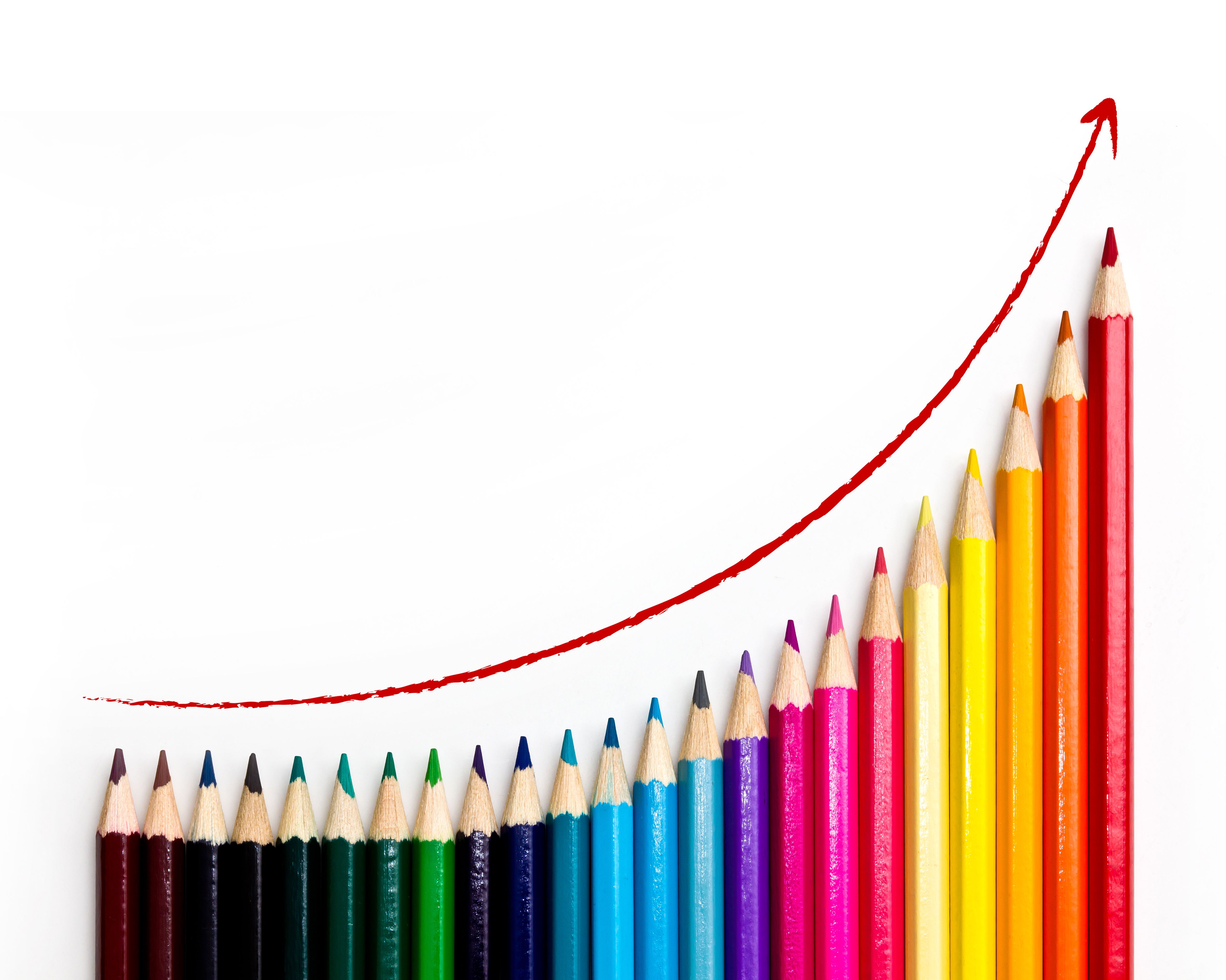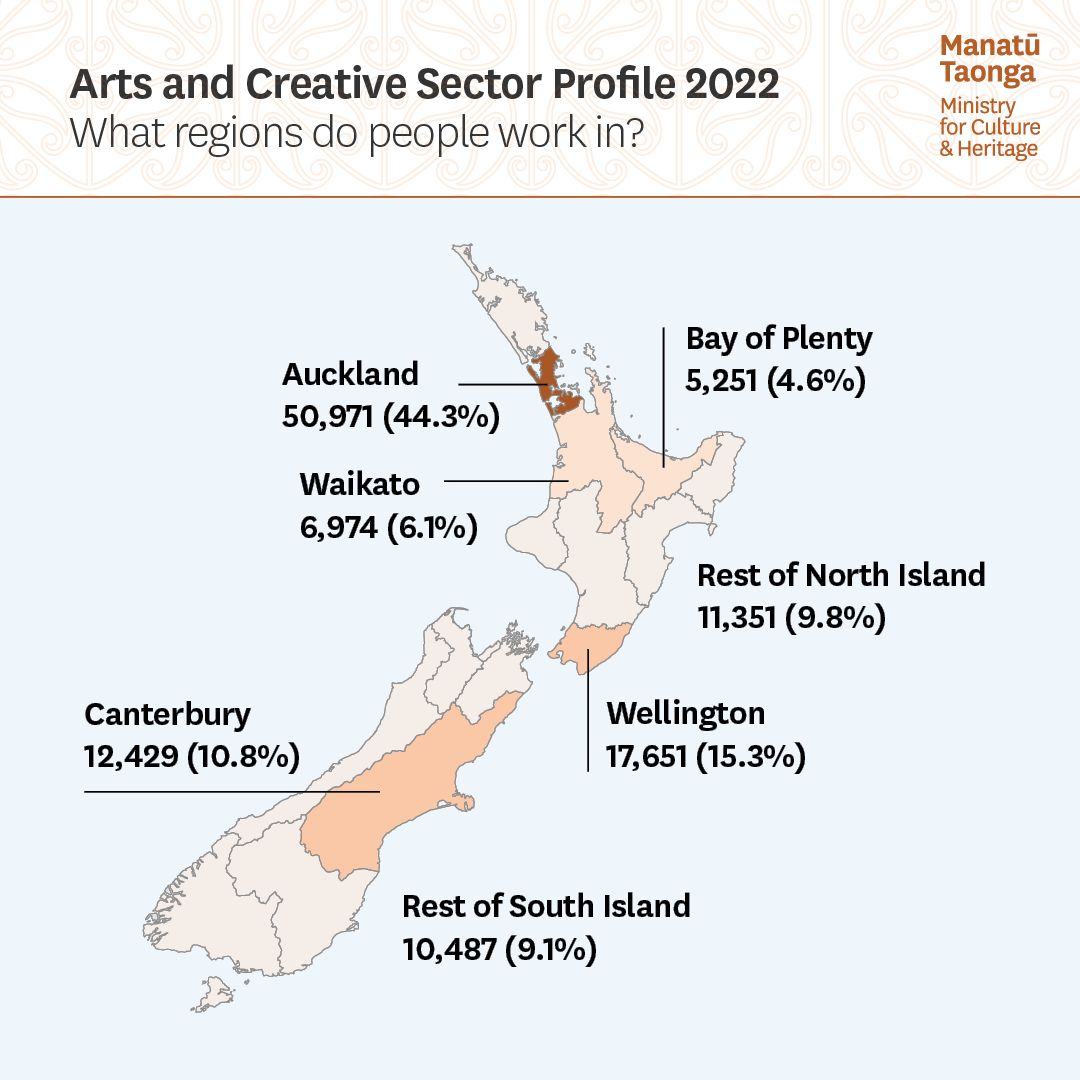EXCLUSIVE: Arts & Creativity $14.9 Billion Sector
Ministry for Culture and Heritage officials are dissecting the latest data regarding how the creative sector stacks up nationally- we break down the key stats.

$14.9 billion.
That's how much the arts and creative sector contributed to New Zealand's GDP in the latest annual research sourced by Manatū Taonga Ministry for Culture and Heritage (MCH), The Big Idea can reveal.
MCH has worked with Infometrics and sector stakeholders to create updated economic profiles of the arts and creative sector which measure a range of employment, business and productivity measures - with this newest data covering up until the end of March 2022.
That headline stat is being celebrated by MCH's Deputy Chief Executive of Policy and Sector Performance, Emily Fabling.
She told The Big Idea, "It’s heartening to see the strong GDP growth in the arts and creative sector over the past year despite the ongoing challenges from the effects of COVID and cost-of-living pressures. The GDP of $14.9b is a 12-month increase of 10% - compared to total economy GDP growth of 5.3%.
"2022 was a record year where the arts and creative sector made up 4.2% of the total economy - the highest recorded level in a data series going back to 2000.
"This data helps show that our creative sectors are a significant economic driver with great growth potential to support economic prosperity, boost our reputation on the world stage, and celebrate our unique cultural identity.
"Showing economic value is, of course, only one part of the picture - but it is very helpful to have the evidence showing the sector generates significant economic value while also enriching communities."
In the detailed report on the Arts and Creative sector, some of the other key stats:
- There are more than 115,000 people whose primary employment is in the arts and creativity - that's a 3.8% increase from March 2021 to March 2022.
- There are almost 36,000 businesses in the sector
- Over 10,000 Māori hold primary employment in the Arts and Creative Sector
- The Māori arts and creative sector contributed more than $1.3 billion to GDP in Aotearoa
- Of people with primary jobs in the Arts and Creative Sector, 32% are self-employed - twice that of the total economy (16.2%)
- Auckland houses almost half (44.3%) of people working in the Arts and Creative Sector work in Auckland

Through the gathered data, Infometrics forecasts there will be 37,006 total job openings in the Arts and Creative sector in New Zealand between 2023-2028. Of those forecast, 9,483 are forecast to be new job openings.
Art's solo spotlight
In addition to the Arts and Creative Sector details, MCH has worked with Creative New Zealand (CNZ) to define and create a new arts sector profile to gain a more accurate understanding of the challenges those in the arts specifically face.
In the new Arts Sector profile - some of the key stats
- GDP sits at $2,762m - which is 0.8% of the overall national GDP
- There are 27,717 filled jobs in the Arts sector, which accounts for 1.0% of NZ's overall filled jobs
- Employment in the Arts grew by 2.8% in 2022 - just below the country's overall employment growth rate of 3.0% in the same time period
- 10,754 businesses in the Arts sector in NZ, an increase of 10.1% compared with a growth of 4.8% in the total economy
- Small to Medium Enterprises (SMEs) accounted for 99.1% of all employment in NZ's Arts sector
Of those working in the sector, the top five occupations are:
- Music Teacher (Private Tuition)
- Painter (Visual Arts)
- Author
- Dance Teacher (Private Tuition)
- Musician (Instrumental)
In news that will come as no surprise to many, the Arts Sector has 11,641 self-employed workers - accounting for 42% of the sector's workforce and more than double the total NZ self-employment rate (16.2%).
Interestingly, that rate has increased by 8.1% over the past 15 years compared to the overall self-employment rate in New Zealand which has decreased by 0.9%.
80.7% of the Arts sector workforce are employed in what is described as highly-skilled occupations. This is higher than for all occupations in New Zealand (38.4%).
That number doesn't look set to drop - Infometrics estimates that between 2023-2028, there will be 10,091 total job openings in the Arts sector (30.3% expected to be new job growth) with three-quarters of those positions likely to be highly-skilled jobs.

When asked for the most concerning stat this collective data has produced, Fabling responds "Although the sector has grown in economic value since 2000, it has shown it can be sensitive to negative economic conditions, such as cost of living pressures.
"This validates the experiences of creatives who have been affected by audiences staying home when disposable income is tight.
"Volatility can also be seen in sector employment, which has grown overall but is fragile in some areas."
Armed with these reams of data, Fabling explains it is more than just a historical marker to keep tabs on - but information that will inform MCH's decision-making for the next 12 months and beyond.
"This kind of data helps grow our evidence base and gives us a more accurate understanding of what’s going on. We then use this evidence to support our policy advice to the Government so that we can best support a thriving cultural system.
"Having a clear picture of the economic situation of different parts of the sector is an important part of our evidence base, but only one part of the story.
"We are also constantly connecting with people in our sectors, and use comparative research from New Zealand and overseas to help tell our stories and give advice. We are also working to strengthen the evidence of the broader social contribution the cultural sector makes, including the benefits of participation."